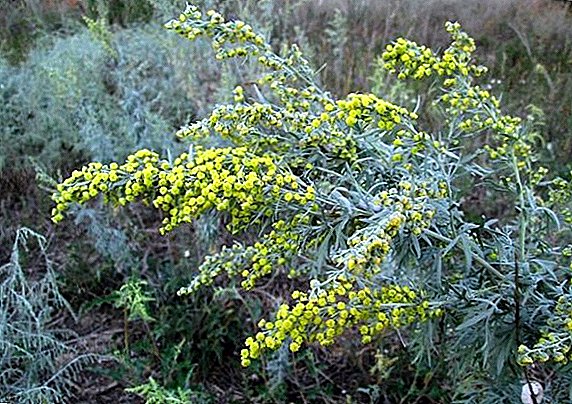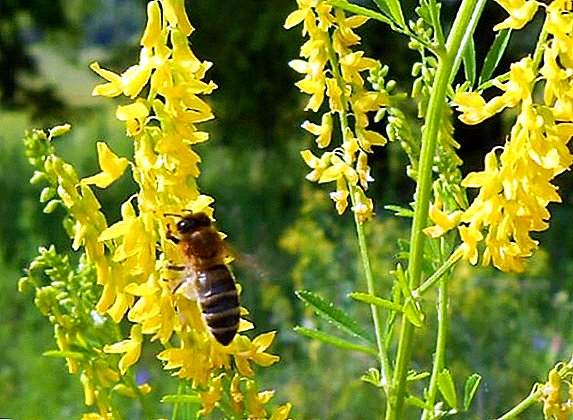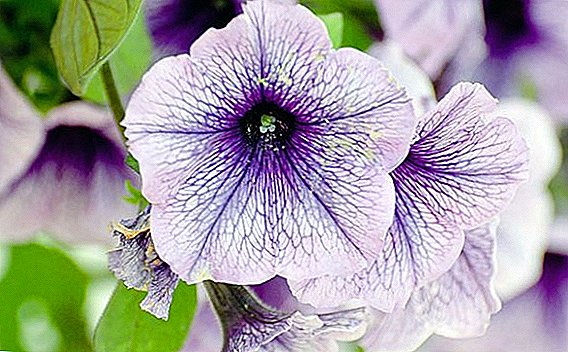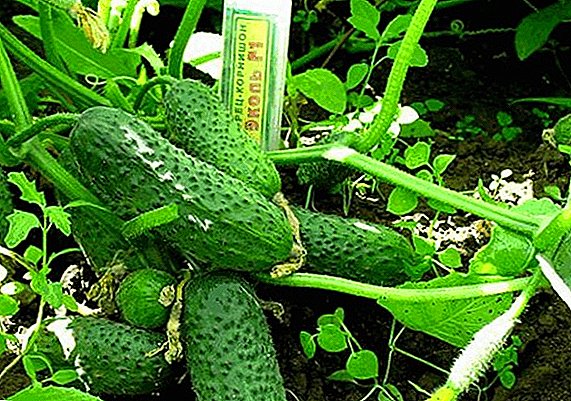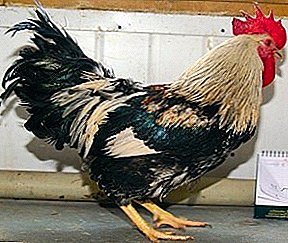
This type of leaf-shaped cactus is very popular with amateur flower growers.
Its main advantage is abundant and long blooming with fragrant, bright, rather large flowers.
Only here to achieve their appearance is not very simple.
To make Epiphyllum bloom, observe a number of conditions of its maintenance.
Home care
Before selecting an item to purchase, inspect it carefully. Stems should be dense and saturated green, elastic.
Having noticed on them stains, cobweb, mold in a pot, wait a little with the purchase. Also, do not get a cactus with broken, dried or sluggish shoots - these are signs of the disease.
Do not buy the plant if it has buds. When moving, as noted earlier, the buds will fall off.
The areoles on which they were will no longer be able to bloom. Thus, this copy will obviously be non-flowering in the next two years.
Repot in a cramped pot, the roots should fill almost the entire space. Shake off the old substrate completely. To prevent disease, treat the roots with charcoal. After transplanting, do not water the flower for a couple of days.
The video tells tips flower growers for the care of cactus:
Seasonal calendar
February. Waking time from hibernation. Place the flower in a warm place and start watering it.
March, April. Cactus picks up the buds. Increase the frequency of watering. At this time, give the first seasonal dressing.
May June. Flowering time. Water the cactus so that the soil is slightly wet. Spray regularly. Feed every two to three weeks.
July. End of flowering. Favorable breeding time. "Epiphyllum" can be transferred to the street or put on a shaded window sill.
August. The time of transplantation in the new soil. Feed the plant with potash fertilizer.
September-November. Preparation for the rest period. Last feeding.
December - January. State of rest. Very economical, even poor watering. Content temperature no higher than 13 degrees.
Bloom
Why does not bloom cactus?
"Epiphyllum" will grow fine with any content and does not require special care for this. The only problem is flowering.
What to do if Epiphyllium does not bloom? For it to bloom in beautiful large flowers, special conditions are required.
From the conditions under which you keep Epiphyllum in the winter, its flowering in the summer depends. From November to February, the plant is in a dormant period.
Of course, finding a cold and at the same time bright place in the apartment is not easy. Put it closer to the window. And from the batteries block the protective screen.
Do not fertilize at this time and reduce watering to a minimum. The soil should not dry out, but should not be wet. Compliance with these conditions is necessary for the bookmark flower buds.
How to make bloom?
This can be done only by knowing some tricks and observing the rules:

- In late February, the plant is actively beginning to form buds. At this time, you can not move and even rotate it. This will cause the flower to fold buds.
- March - time to increase watering. The ground in the pot should be always moist.
- Flowers are formed only on fresh, thickened shoots, and each areola blooms once. All old shoots need to be deleted.
- This species blooms only when it grows in a cramped pot, so do not plant it in spacious dishes and do not repot often.
"Epiphyllum" can be grafted on prickly pear, selenitserius. The survival rate of such a scion is quite high. On stock development occurs quickly and more often than other specimens, the vaccinated specimens bloom.
Reference: The best time for vaccination is spring. And the day should be dry and hot.
To carry out the procedure, cut the Epiphyllum stalk, place it on the Opuntia cut. Do not allow the cuttings to dry.
When combining, try to match the center of the two cuttings for the occurrence of a vascular connection. Cover the top of the stock with cotton wool and secure the design crosswise with a rubber band.
Place the pot in a warm, damp place, covered with a jar. So you need to keep it 10-12 days. Watering by immersion.
How to care for Epifillum after flowering?
Transfer
Immediately after flowering, Epiphyllum can be transplanted into a new soil. Every year it is not necessary to replant it. For planting pick up a flat, wide dishes.
At the bottom of the pot be sure to lay a layer of drainage to prevent stagnant water.
A couple of days before transplanting, stop watering so that the roots are as free as possible from the old soil.
Sterilize the earth using the water bath method. "Epiphyllum" is placed in a fresh substrate and placed in a dark place to adapt.
It should be lightly watered after the procedure.
Flower shape improvement
The formation of the bush - a necessary condition. Old, withered shoots are removed from it, since buds are no longer formed on them.
Also need to remove trihedral shoots. These thin stems also never bloom, so you should not leave them, so the cactus did not spend power on them.
Tip: for the formation of a beautiful bush should pinch too regrown, large shoots.On these stems young shoots quickly grow, on which flower buds are subsequently formed.
Breeding methods
Seminal
 Reproduction of "Epiphyllum" seeds by seeds is not very popular, since the process of growing full-fledged cacti is rather long.
Reproduction of "Epiphyllum" seeds by seeds is not very popular, since the process of growing full-fledged cacti is rather long.
Sowing is done in early spring in flat dishes filled with sand. Under the layer of sand pour drainage.
Moisturize the surface, spread the seeds over it, then sprinkle lightly with another layer of sand.
Top container covered with glass and put in a warm, bright place.
Shoots are similar to the usual trihedral cacti with prickles. With the growth of the stems become flat, naked.
Grown in such a way young specimens bloom on the 5th year.
Cuttings
Conducted in April or in August, after flowering. The stalk is cut from a flat shoot. Do not cut cuttings narrowed down - they are poorly rooted.
Cutting length - about 11-12 cm. Sharpen the workpiece with an angle, dry it, placing it for two days in an empty container vertically, cut down.
When the juice runs out, the cuttings are planted in the nutrient substrate to a depth 1 cm For grafting take plastic dishes, it is better preserved moisture.
After planting, do not water until rooting, so as not to provoke the process of decay.
After rooting planted in pots diameter 7-8 cm
Formation of layering
When grown in a damp room on high stems, air roots form. Stalk with such growths can be bent and slightly deepened in the soil. On the stem, the cuttings will grow, separating which, you can grow new specimens.
Care for "Epiphyllum" during the growing season
Lighting and temperature
A native of Mexico, he likes it when it's warm and light. Therefore, keep it in summer at a temperature not below 22 degrees.
This cactus needs a lot of light, but do not allow direct sunlight on it. Do not keep it on the south windows.
Reference: Western or eastern windows are ideal for growing.
If there is no such possibility, then in a sundial remove the plant from the window or curtain the glass with a loose cloth.
You cannot grow it on the northern windows of Epifillum; light will not be enough for it. Due to lack of lighting, he becomes ill with chlorosis, the leaves turn yellow and shrivel. If conditions allow, in the summer take the flower to the street.
Watch out for the sun.
Important: when buds form on Epiphyllum, do not turn it towards the sun by the side on which they grow. In this case, the plant will drop all the buds.
The soil
The ideal composition for it is a mixture of leafy earth - 4 parts, sand, sod and charcoal - 1 part each. This primer can be purchased at the store in finished form. You can add a little humus.
Do not add lime, it does not tolerate Epifillum.
Humidity and watering
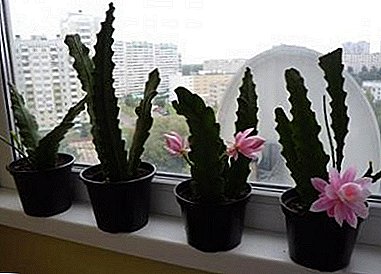 Excessive air dryness is harmful for this plant; it is usually observed in very hot summer and during the heating season.
Excessive air dryness is harmful for this plant; it is usually observed in very hot summer and during the heating season.
Use frequent spraying of Epiphyllum during this period.
Watering is necessary often, but moderately. The soil should be moistened, not poured. Do this by drying the top layer in the pot.
With a strong decrease in temperature or in very rainy weather, watering should be reduced.
For irrigation take soft, defended water. Do not water with lime water. A good way to improve the quality of water is its freezing and subsequent thawing.
Top dressing
What would "Epifillium" put down its roots need to be fertilized regularly, at intervals once in 15-20 days. Use the universal fertilizer for cacti. Especially necessary trace elements during budding and flowering. If you notice signs of yellowing of the stems, apply nitrogen fertilizer.
A photo
The photo shows the flowers of Epiphyllum:



Diseases and pests
Redhead
Mealy - white insect, colonizes stems. Pulls out of them juices.
Destroyed by washing with soapy water and using insecticides.
Spider mite
A small white cobweb on the stems and their fading signal its appearance.
Effectively destroyed by ultraviolet lamp.
Aphid
It covers the stems with a sticky coating and looks like greenish-brown spots on the stem.
You can fight it by washing it with a solution of alcohol, laundry soap, tobacco infusion. You can use a special poison, widely represented in the sale.
Shchitovka
Insect covered with a protective shell, thanks to which it is resistant to poisons. Remove it with a cotton swab dipped in alcohol.
The stems are rubbed and then treated with an insecticide. The procedure is carried out several times with an interval of two weeks.
Slugs and Caterpillars
Can live on a plant that is kept outdoors during the growing season.
To prevent their occurrence in advance apply the corresponding poison.
Diseases
Diseases Epiphyllum begins to suffer due to improper care and viruses falling on them.
When watering the soil roots rot. This is indicated by the wilting of the plant.
When a cactus is affected by a fungus, the tips dry up on it, corky spots appear, buds fall off.
Epiphyllum is extremely rarely cured of such diseases.
It is more expedient to save the remaining part, preserve it with a fungicide and discard the damaged part.
 So that Epiphyllum does not hurt:
So that Epiphyllum does not hurt:
- Water it only with warm water, slightly moistening the soil. When keeping in a cool room watering as much as possible reduce.
- Land for planting and transplanting must be sterilized.
- Do not abuse feedings. Use special fertilizers.
- Harden "Epifillum", take it in the summer to a street or balcony.
- Regularly carry out preventive treatments to protect against diseases and pests.
- Do not keep in direct sunlight. His shoots from it become red, wither and frown.
- Do not move the cactus during the formation of buds, they fall off and do not bloom.
With all these conditions, your pet will surely please you with large, beautiful, fragrant flowers.
Blooming Epifillum - a beautiful decorative element of the interior of your apartment.


